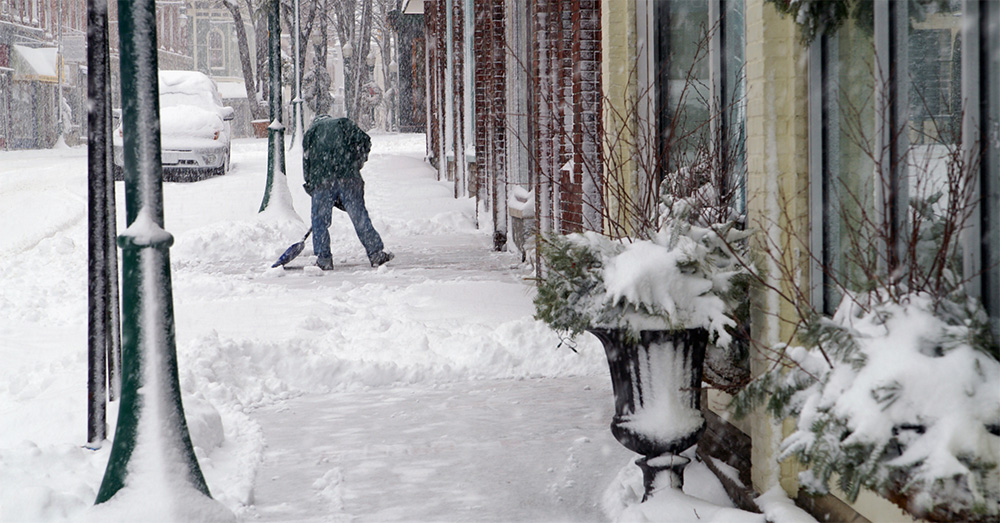If you own a business, you’ll want to make sure you’re prepared to provide a safe and hazard-free workplace during the winter months. If OSHA regulations cover your business, you’re required to provide a safe work environment for your employees. But even if you’re not, it’s a smart business decision to keep your employees safe and protect yourself from lawsuits. Here’s a quick checklist of some of the most common winter hazards and ways you can encourage employees to stay safe.
Keep all parking lots, drives, and sidewalks well-lit and free from snow and ice. Have a plan for regular snow removal and salt or de-icing to keep walkways safe. Slipping and falling on ice is one of the most common winter injuries, and some can be fatal. Encourage your employees to dress appropriately –including boots in severe weather and walk slowly on winter walkways.
Winter driving conditions often mean slower driving and longer commutes, translating into employees arriving late to work. Make sure they know their safety comes first. Promote safe winter driving practices, such as slowing down in inclement weather and keeping cars clear of snow and ice when driving--including windshields, lights, and tires. Encourage employees to maintain a winter safety kit in their vehicle, which might include water, blankets, flashlights, and flares. You might also consider a winter weather plan that provides for work-from-home options.
While you don’t control what your employees do at home, it is in your best interest to keep them healthy and at work. So...let’s talk about home snow removal. Snow shoveling is arduous, and yet every year, people who aren’t regularly active still try to do their snow shoveling. The result? Thousands of injuries—including back pain, muscle injuries, and even heart attacks. To help avoid employee absences due to snow shoveling injuries, send employees a quick email with this advice:
National Safety Council recommendations:
If your employees work outdoors, teach them how to recognize the signs of cold stress, hypothermia, and frostbite. Clearly set the wardrobe expectations for different weather conditions. Basic guidelines might include dressing in layers and wearing an appropriate coat, gloves, and hat. Additional guidelines might consist of goggles, protective headgear, and shoes designed with snow and ice traction.
Every workplace is different, and yours may have unique hazards. If you have employees at desks, you may need a policy about space heaters, potentially hazardous. Or you may deal with winter conditions unique to construction sites. You know yourbusiness best, so take the precautions you see as necessary.
And remember, winter weather doesn’t care what your plans are. It could affect what you get done that day, and the consequences may seem dire. But things could always be worse. Make a plan now to keep you and your employees safe when winter weather strikes--it could protect your bottom line down the road.
If you’d like to discuss how you can protect your business with insurance coverage, give us a call. Sea Mountain Insurance is here to keep your business investment safe.
